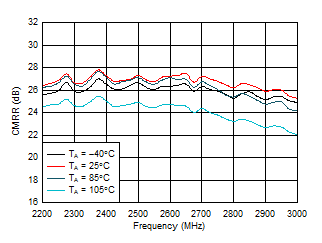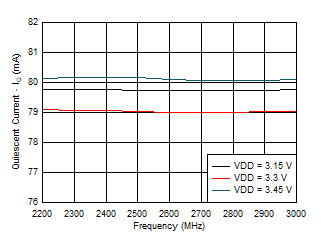SBOS964 December 2019 LMH9226
PRODUCTION DATA.
- 1 Features
- 2 Applications
- 3 Description
- 4 Revision History
- 5 Pin Configuration and Functions
- 6 Specifications
- 7 Detailed Description
- 8 Application and Implementation
- 9 Power Supply Recommendations
- 10Layout
- 11Device and Documentation Support
- 12Mechanical, Packaging, and Orderable Information
Package Options
Mechanical Data (Package|Pins)
- RRL|12
Thermal pad, mechanical data (Package|Pins)
Orderable Information
6.6 Typical Characteristics
at TA = 25°C, VDD = 3.3 V, center frequency (fIN) = 2.6 GHz, single-ended input impedance (ZIN) = 50 Ω, differential output impedance (ZLOAD) = 50 Ω, and POUT(TOTAL) = 8 dBm into ZLOAD = 50 Ω (unless otherwise noted)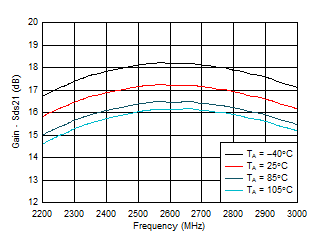
| POUT = 2 dBm |
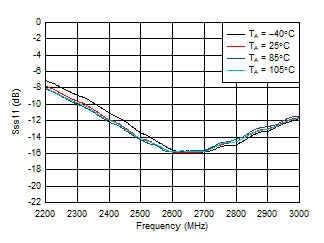
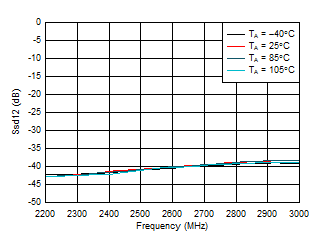
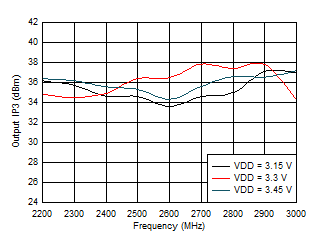
| POUT/TONE = 2 dBm, ±1-MHz tone spacing |
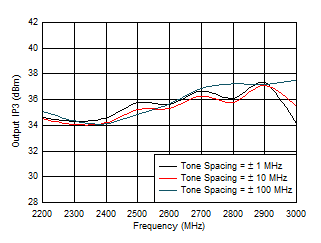
| POUT/TONE = 2 dBm |
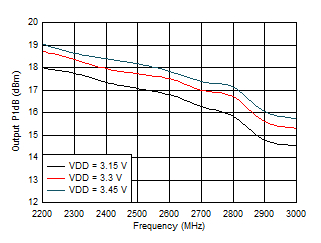
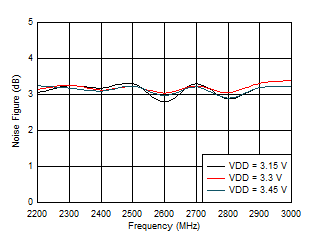
| ZSOURCE = 50 Ω |
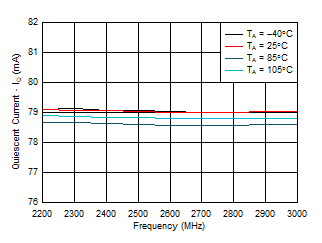
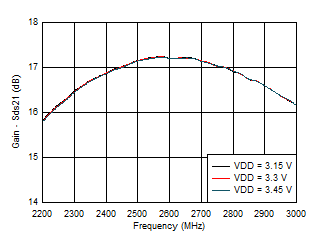
| POUT = 2 dBm |
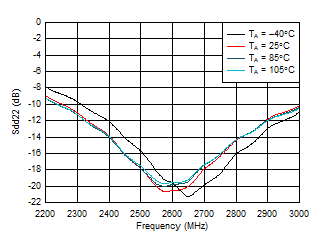
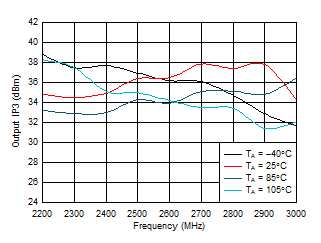
| POUT/TONE = 2 dBm, ±1-MHz tone spacing |
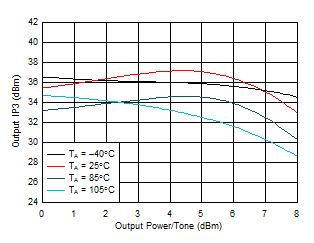
| f = 2.6 GHz, ±1-MHz tone spacing |
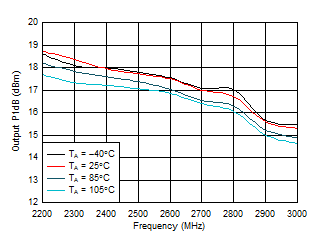
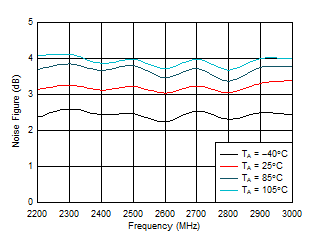
| ZSOURCE = 50 Ω |
